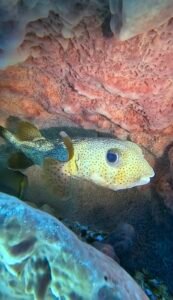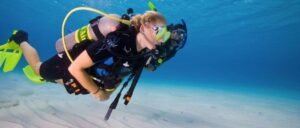
Welcome, fellow diving enthusiasts! Whether you’re an experienced diver or just dipping your toes into the underwater world, understanding the language of scuba diving is essential for a safe and enjoyable experience. Welcome to the ABCs of Diving, where we will explore different scuba diving terms as we go through the alphabet. Today we begin with the letter A:
Alternative Air Source: Also known as an “octopus” or “secondary regulator,” this is an extra breathing apparatus carried by divers for emergencies. It allows a diver to share air with a buddy in case their primary regulator malfunctions or runs out of air.
Altitude Diving: Altitude Diving is when the location of the dives are situated at high altitudes, typically above 300 meters (1000 feet) above sea level. Altitude diving requires adjustments to diving tables or dive computers due to the decreased atmospheric pressure at higher elevations.

Ambient Light: Natural light you see in the underwater environment, which diminishes as depth increases. Ambient light affects visibility and the colors perceived underwater. Divers often use dive lights to illuminate their surroundings in deeper or darker waters, this way we can see better and see everything as its true colour.
Ambient Pressure: The pressure exerted by the surrounding environment, which increases with depth underwater. It’s important for divers to equalize the pressure in their ears and sinuses to avoid discomfort or injury.
Anoxia: A condition characterized by a lack of oxygen, which can occur in diving situations if a diver’s air supply is depleted or compromised. Anoxia can lead to unconsciousness or even death if not addressed promptly.
Apnea: Also known as free diving, Apnea is when one is holding there breath intentionally while underwater. Some diving activities, such as free diving or spearfishing, involve apnea techniques to extend dive times without the use of scuba gear.
Ascent: The upward movement of a diver towards the surface at the end of a dive. Ascending too quickly can lead to decompression sickness or “the bends,” making controlled ascent rates crucial for diver safety.

Ascent Rate: The speed at which a diver ascends to the surface. Divers must ascend at a controlled rate to allow their bodies to safely off-gas excess nitrogen absorbed during the dive.
Whether you’re exploring coral reefs in tropical waters or diving into the depths of cenotes, mastering these scuba diving terms is essential for a fulfilling and safe underwater adventure. So, grab your gear, take a deep breath, and let’s dive into the mesmerizing world beneath the waves!

